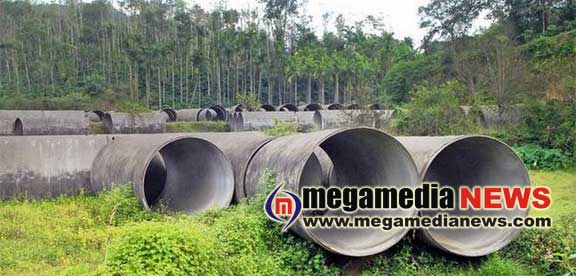‘Over exploitation of water alters perennial streams’
10:24 AM, Monday, February 26th, 2018 Mangaluru: Overexploitation of water for monoculture has altered some of the perennial streams in the ghats of the Netravathi river basin to intermittent streams coming in the way of perennial nature of the Netravathi, according to a study report by a team of researchers of the Indian Institute of Science (IISc), Bengaluru.
Mangaluru: Overexploitation of water for monoculture has altered some of the perennial streams in the ghats of the Netravathi river basin to intermittent streams coming in the way of perennial nature of the Netravathi, according to a study report by a team of researchers of the Indian Institute of Science (IISc), Bengaluru.
The swamp ecosystem in the basin, spread over 4,409 sq km in 11 taluks in Chikkamagaluru, Hassan, Kodagu, Dakshina Kannada and Udupi districts, is under higher threat due to horticulture expansion and land conversion for other development activities, it said.
The report “Carrying capacity of Netravathi river basin based on the ecological sensitiveness” has said that soil depth and texture decided the water holding capacity in the catchment. The Netravathi catchment is dominated by clayey soils which have fewer pores due to which infiltration capability is very low but have higher water holding capacity which supports larger vegetation and keeps the rivers perennial in natural condition.
Soils are moderately deep to very deep in nature. Ghats and transition zones of the Netravathi is dominated by deep soils with sparse moderate deep soils.
“The presence of deeper soils with clayey content in the ghats have higher retention capacity during post monsoons and summer keeping the Netravathi perennial. But over exploitation of water for monoculture has altered some of the perennial streams to intermittent streams,” the report said.
The 203-page report by the Energy and Wetlands Research Group (EWRG), the Centre for Ecological Sciences (CES), IISc, released on Friday has been prepared by T.V. Ramachandra, co-ordinator, EWRG-CES, Bharath Setturu and Vinay S., researchers.
Referring to the forest cover of 2016 in the basin, it said that the area under forests stood at 51.67 % after losing significant green patch for mini-hydroelectric, infrastructure projects and monoculture plantations. The plantations constituted 26.42 % of the basin.
Large tracts of forests have been replaced with monoculture plantations such as acacia, eucalyptus, rubber, teak, coffee, cocoa, and arecnaut plantations.
The report remarked that the existing exotics should be replaced with endemic species. Community-based conservation approach in ecologically sensitive regions (ESR) of II and ESR III would help in the conservation of biological diversity, the report said.
Simillar Posts
Warning: count(): Parameter must be an array or an object that implements Countable in /home/megamcaq/public_html/wp-content/plugins/post-plugin-library/common_functions.php on line 357
- None Found
Leave a Reply
© Copyright 2008 www.megamedianews.com All Rights Reserved. Privacy Policy








 Posted in
Posted in  Tags:
Tags: 



